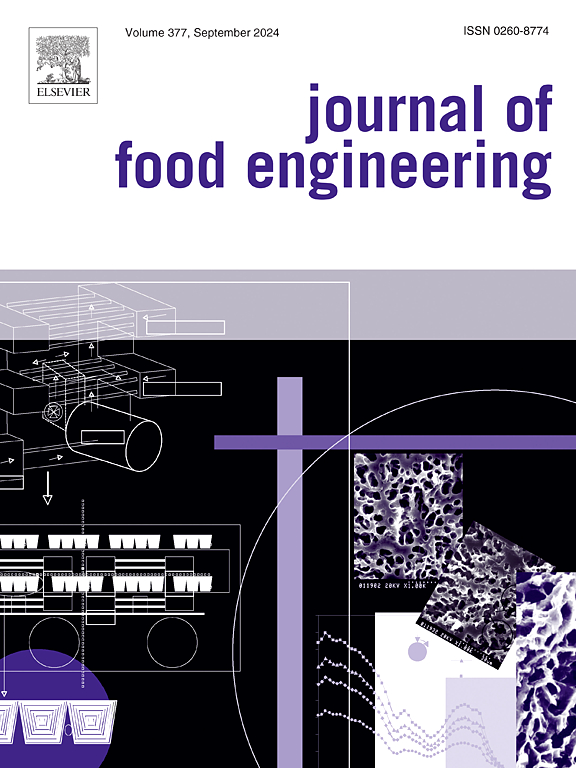溶液选择和工艺参数对液体非热浓缩正向渗透的性能有影响
IF 5.8
2区 农林科学
Q1 ENGINEERING, CHEMICAL
引用次数: 0
摘要
正渗透(FO)是一种利用高度浓缩的抽液(DS)与待浓缩液体之间的渗透压差驱动的方法,是液体食品非热浓缩的一种解决方案。确定具有低反溶质通量(RSF)、高渗透压和低粘度的食品级DS对于促进FO在食品中的应用至关重要。在这项工作中,对食品应用的DS候选物进行了广泛的预筛选,随后进行了乳酸钾、苹果酸二钾、果糖和木糖醇的实验测试。采用带螺旋缠绕三醋酸纤维素膜的台式FO装置,对去离子水的水通量(Jw)、RSF和比反溶质通量(SRSF)进行了评价。研究了进料温度、DS温度和流量对FO的影响。饲料温度和DS类型显著影响Jw和RSF。苹果酸二钾具有较高的Jw (5.3 ~ 8.8 L m−2 h−1)和较低的RSF(19.38±6.16 mg m−2 h−1)。这项工作的结果可以指导FO的食品应用,并有助于将该技术推向市场。本文章由计算机程序翻译,如有差异,请以英文原文为准。
Draw solution selection and process parameters impact the performance of forward osmosis for nonthermal concentration of liquids
Forward osmosis (FO), which is driven by the osmotic pressure difference between a highly concentrated draw solution (DS) and the liquid to be concentrated, is emerging as a solution for the nonthermal concentration of liquid foods. Identifying food grade DS with low reverse solute flux (RSF), high osmotic pressure, and low viscosity is crucial for facilitating food applications of FO. In this work, an extensive pre-screening of DS candidates for food applications, followed by experimental testing of potassium lactate, dipotassium malate, fructose, and xylitol, were conducted. A bench-top FO unit with a spiral wound cellulose triacetate membrane was used to evaluate water flux (Jw), RSF, and specific reverse solute flux (SRSF) against deionized water. The effects of feed temperature, DS temperature, and flow rate on FO were also assessed. Feed temperature and DS type significantly affected Jw and RSF. Dipotassium malate showed the highest Jw (5.3–8.8 L m−2 h−1) and the lowest RSF (19.38 ± 6.16 mg m−2 h−1) of all DS, due to its molecular weight and low viscosity. The results of this work can guide food applications of FO and help bring this technology to market.
求助全文
通过发布文献求助,成功后即可免费获取论文全文。
去求助
来源期刊

Journal of Food Engineering
工程技术-工程:化工
CiteScore
11.80
自引率
5.50%
发文量
275
审稿时长
24 days
期刊介绍:
The journal publishes original research and review papers on any subject at the interface between food and engineering, particularly those of relevance to industry, including:
Engineering properties of foods, food physics and physical chemistry; processing, measurement, control, packaging, storage and distribution; engineering aspects of the design and production of novel foods and of food service and catering; design and operation of food processes, plant and equipment; economics of food engineering, including the economics of alternative processes.
Accounts of food engineering achievements are of particular value.
 求助内容:
求助内容: 应助结果提醒方式:
应助结果提醒方式:


